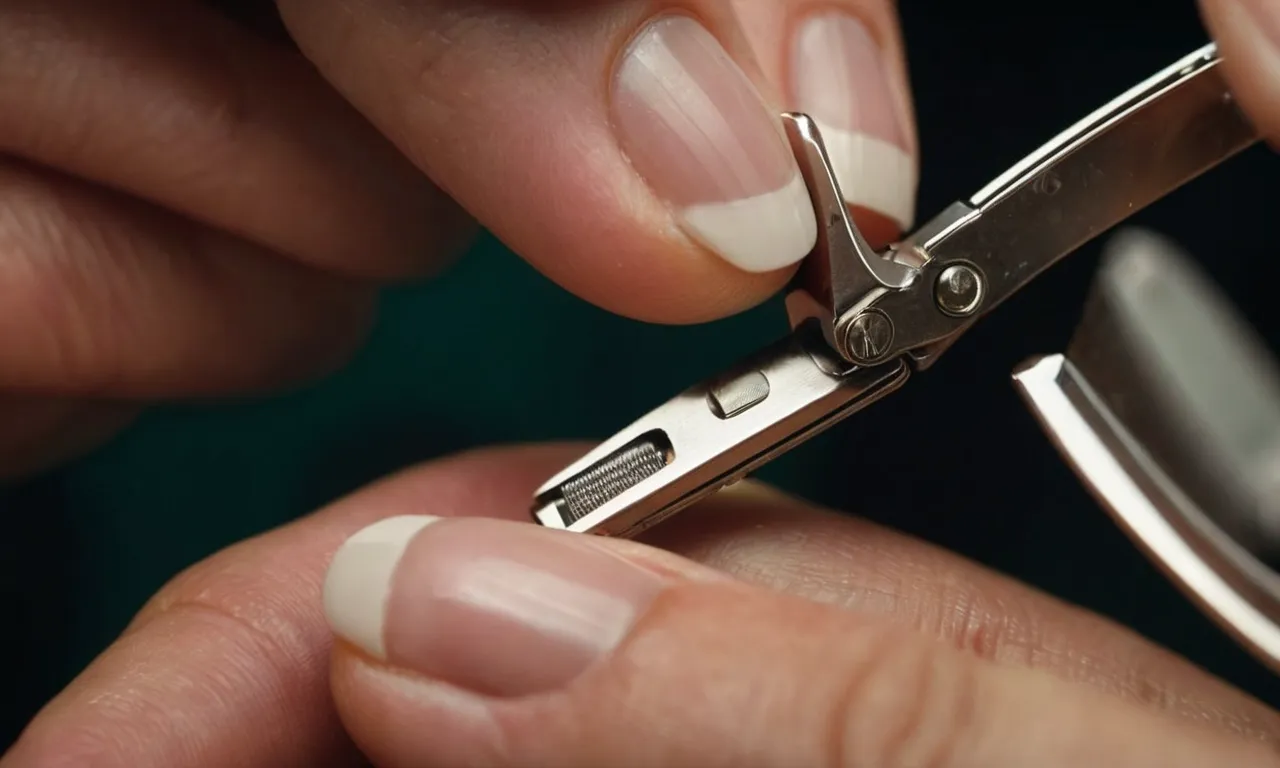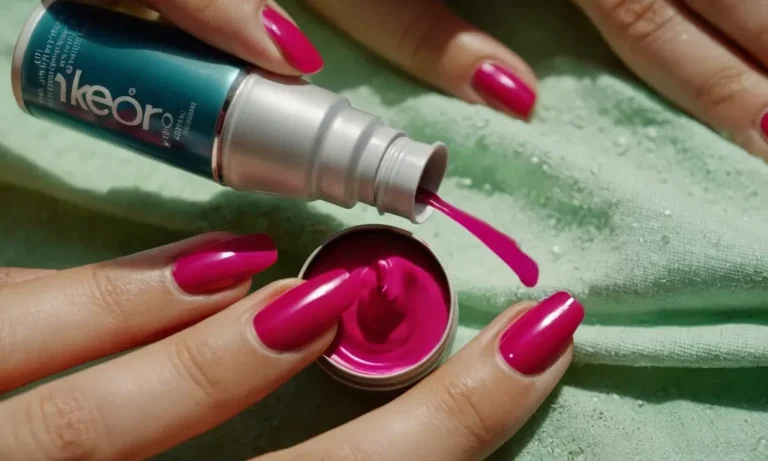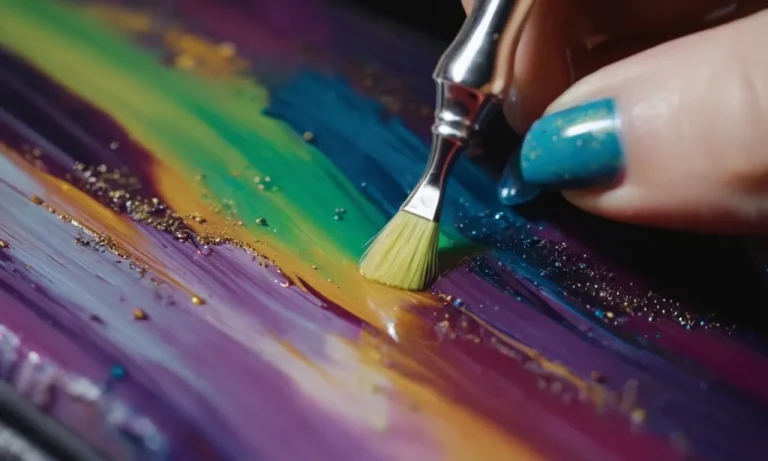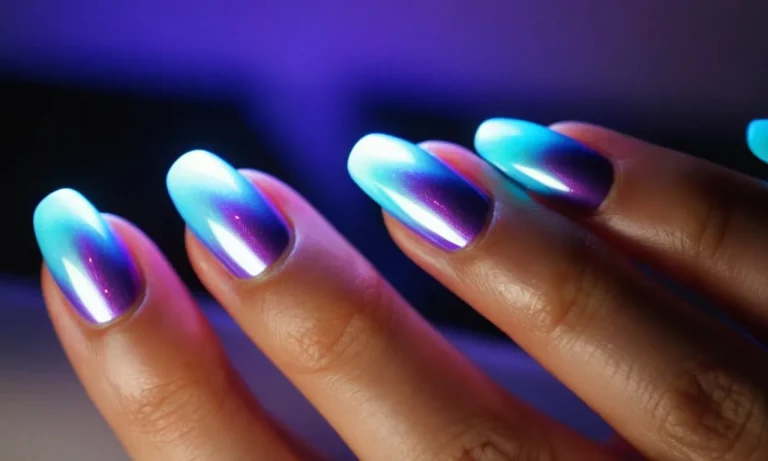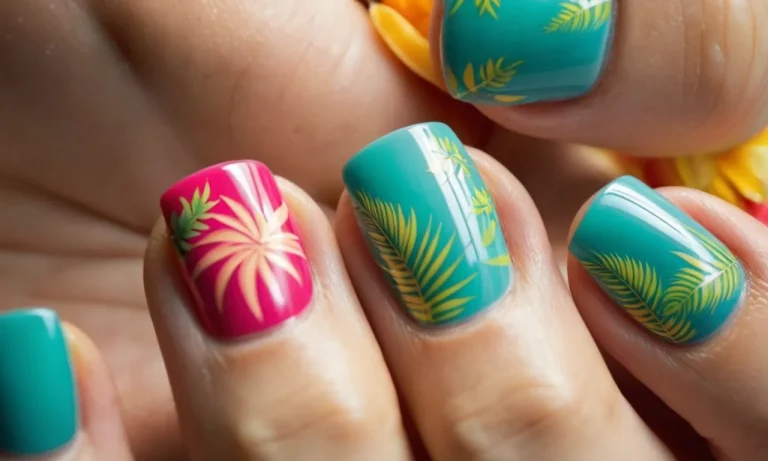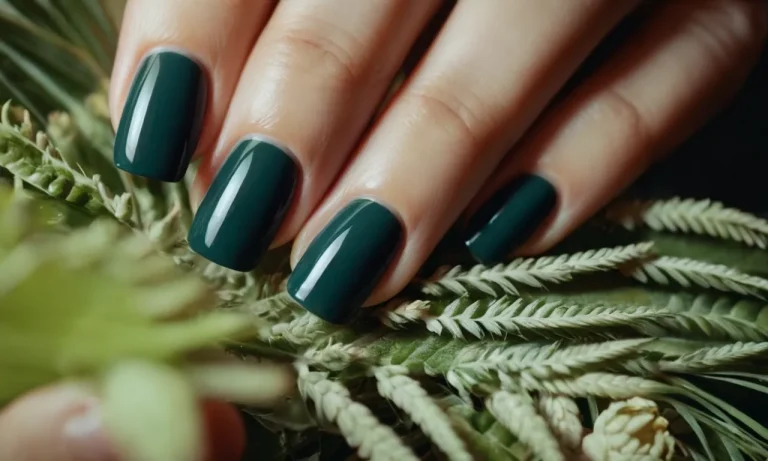How To Safely And Effectively Cut Off A Wart At Home
Dealing with warts can be frustrating. If you’re looking for a quick at-home solution to get rid of one, you may be tempted to just cut it off with a pair of nail clippers. However, this carries risks if not done properly.
In this comprehensive guide, we’ll walk you through the do’s and don’ts of using nail clippers to remove warts, when it is and isn’t recommended, and alternative treatment options that may be safer and more effective for certain types of warts.
If you’re short on time, here’s a quick answer: Using nail clippers to cut off warts is not generally recommended as it can cause bleeding, scarring and increase risk the wart growing back or spreading to other areas.
There are safer at-home treatment options to remove warts, depending on the type and location, though for some cases seeing a dermatologist is best.
What Are Warts and What Causes Them
Warts are small, rough growths on the skin caused by infection with certain strains of the human papillomavirus (HPV). There are over 100 types of HPV that can cause warts on different parts of the body. Common warts, usually found on hands and feet, are caused by HPV types 1, 2, 4, 27, and 57.
Plantar warts occur on the soles of the feet, while flat warts can occur anywhere but are most common on the face, legs, arms, and back. HPV thrives in warm, moist environments like locker rooms and swimming pools.
HPV causes most common warts on hands/feet
The HPV viruses that cause common hand and foot warts are highly contagious. They can spread through direct skin-to-skin contact or by touching objects like towels or surfaces that have been contaminated with the virus. Up to 10% of the general population has common warts at any given time.
Hand warts are especially common in children and teens, who spread them easily through play and sports activities. Using public showers and walking barefoot in locker rooms increases risk of exposure to wart-causing HPV.
Different types of warts based on location, appearance
In addition to common warts, other wart types include:
- Plantar warts – Occur on the soles of the feet, often in pressure points; usually flesh-colored with black pinpoints
- Flat warts – Smooth, flat-topped lesions that can occur anywhere on the body but favor the face, legs, arms, and back
- Filiform warts – Long, narrow lesions often found around the eyes, lips, nose, and chin
- Periungual warts – Grow under and around fingernails and toenails
The location and appearance of warts provide clues as to which HPV type is causing them. However, many types can cause warts almost anywhere. Warts that occur on moist surfaces like the genitals are caused by different HPV strains than other common warts.
Some types more likely to recur after removal
While warts sometimes go away on their own, most people opt to have them removed due to discomfort or appearance. However, certain types like plantar warts have a high recurrence rate after treatment. According to the American Academy of Dermatology (AAD), plantar warts recur in up to two-thirds of cases because the virus remains after visible signs of the wart are removed.[1] Periungual warts can also be challenging to eradicate completely.
Multiple treatments are often needed for stubborn wart types.
Pros and Cons of Using Nail Clippers to Remove Warts
Can provide quick removal if successful
Using nail clippers to remove warts may seem like a quick and easy DIY solution. If done properly, the wart can potentially be removed in one clipping motion. This avoids the frequent applications and waiting period of medicated wart removers.
However, this quick-fix approach has some major drawbacks that should be considered first.
Risk of infection, bleeding, scarring at removal site
Attempting to dig out and cut off a wart carries risks of infection, bleeding, and scarring. Warts have roots that embed into the surrounding skin, so hacking at them can cause trauma to healthy tissue. That opens the door to bacteria entering and causing infection.
Excessive bleeding can also occur if blood vessels are severed. And if the removal damages deep layers of skin, scarring is likely to result. Yikes! 😱
According to the American Academy of Dermatology Association (AAD), improper wart removal procedures result in infections up to 10% of the time. So it’s wise to avoid cut-happy, do-it-yourself treatments when gentler medicated options exist.
May not fully remove root leading to recurrence
The tricky thing about warts is they embed root-like structures deep into the skin. If these roots are not fully destroyed, the wart will simply regrow. Studies show recurrence rates of warts treated at home with nail clippers, razors, etc. can be up to 21%. 👎
In contrast, properly applied medicated treatments like salicylic acid have much lower recurrence rates of only 5-8%. The takeaway is that DIY clipping rarely gets down to the roots, so there’s a decent chance that pesky wart will keep bouncing back.
| Wart Removal Method | Recurrence Rate |
|---|---|
| At-home clipping/cutting | Up to 21% |
| Salicylic acid | 5-8% |
For the best chance of permanent removal, it’s wise to leave extensive wart removal to the professionals. Dermatologists have tools to painlessly numb and safely remove all those tiny root-like structures. This minimizes the risk of the wart growing right back.
If you want the satisfaction of being wart-free for good, skip the nail clippers and see a skin doctor instead!
When Is Cutting Off a Wart with Clippers Recommended or Not
Generally not for plantar warts on feet or mosaic warts
Cutting off plantar warts located on the feet or mosaic warts (cluster of tightly grouped warts) using clippers or other DIY methods is generally not advised (1). These types of warts often have deep roots and attempting removal at home risks incomplete removal and further spread of the wart virus (2).
Instead, it’s best to see a dermatologist who can properly treat plantar and mosaic warts through methods like freezing or medication.
Sometimes an option for small, uncomplicated common warts
For small, uncomplicated common warts located on areas like the hands, face or neck, carefully cutting them off with cuticle clippers or a pair of sharp scissors can be done at home in some cases (3).
This method may be an option if the wart is protruding enough to easily access and you can cleanly remove all of the warty tissue down to the root in one attempt. Further treatment like freezing the area may still be needed after cutting off the wart to destroy any remaining virus.
According to one analysis, around 75% of people who cut off uncomplicated common warts experience success. However, cutting too deeply or incompletely removing the wart increases infection risk and the chances the wart will grow back. Sterilizing the clippers thoroughly before and after is critical.
Best for warts in locations that heal quickly without scarring
The best warts to consider removing at home with clippers or scissors are protruding warts located where the skin heals relatively fast and with little scarring, such as the hands. Facial warts can technically be cut off as well if properly sterilized small clippers are used, but anywhere around the eyes should be strictly avoided.
The back of the hands, arms, legs, fingers and torso allow warts to be cut away while minimizing negative effects of at-home removal like scarring if done carefully (4). Areas to absolutely avoid cutting warts off yourself include the bottom of feet, around nails, near joints or anywhere too sensitive, vascular or hard to fully visualize and access.
Step-By-Step Process If You Do Decide to Cut Off Wart
Sterilize tools and skin beforehand
Before attempting to remove a wart at home, it’s crucial to properly sterilize any tools you plan to use as well as the skin around the wart. This helps prevent the spread of the wart virus and lower your risk of infection.
To sterilize tools, wash them thoroughly with soap and hot water before soaking them in rubbing alcohol for at least 10 minutes. Rubbing alcohol is a powerful disinfectant that kills viruses and bacteria. Allow tools to fully air dry before using them.
Next, wash your hands and the skin around the wart with soap and warm water. You can then apply rubbing alcohol or another disinfectant to the skin and let it dry completely. This ensures the skin is free of germs before you begin cutting.
Trim away dead skin on surface first
Before attempting to cut out the wart’s root, it’s wise to first remove any thick, dead skin layers on the surface. This allows you to better see the base you’ll be cutting.
Gently scrape off dead skin on the wart’s surface using a sterile blade, nail file or pumice stone. Don’t go deep enough to cause bleeding. This trimming reduces surface skin that could get in the way when you cut the root.
Cut base swiftly and cover immediately after
Once tools and skin are sterilized, you can attempt to cut out the wart’s root. It’s best to do this quickly in one swift motion to minimize pain and bleeding. Cut at the base where the wart meets healthy skin.
As soon as the wart root is removed, clean the open wound with rubbing alcohol and apply antibiotic ointment and a bandage to protect it. Keeping it covered prevents infection and reduces scarring.
If bleeding persists, apply pressure with a clean cloth or gauze until it stops. Contact your doctor if you can’t get the bleeding under control.
Keep covered and watch for complications
Keep the wound site protected with a bandage for at least a few days as it starts healing. Watch closely for signs of infection, including increased pain, swelling, warmth, redness or pus.
If the wart wasn’t fully removed, the remaining root can cause the wart to grow back. See your doctor promptly if the wart returns to discuss better treatment options, like laser therapy.
While removing warts at home is possible, it does carry risks like pain, bleeding, scarring and infection. It’s always best to have warts professionally treated, especially if they don’t respond to over-the-counter remedies.
But if you do choose to remove one yourself, proper care before and after is crucial.
When to See a Doctor Instead for Wart Removal
Plantar warts often require in-office treatments
Plantar warts, which occur on the bottom of the feet, can be painfully stubborn and challenging to treat at home (1). As Dr. Adam Friedman, associate professor of dermatology, explains, “Plantar warts tend to have very deep roots and are difficult to fully remove without strong medical procedures.”
In-office options like cryotherapy (freezing), prescription creams, laser removal, acid treatments, or surgical extraction are often required for plantar warts. Research shows in-office procedures have a 65-97% clearance rate for stubborn plantar warts (2).
This is much higher than the average 20-60% clearance rate for patient-applied over-the-counter products (3).
Mosaic warts harder to fully remove at home
Mosaic warts often occur in large clusters and have an irregular surface that resembles a mosaic tile pattern. Research indicates they are one of the most stubborn and recurrent human papillomavirus (HPV) strains (4).
While salicylic acid-based products may gradually peel away layers, in-office procedures like cryotherapy or prescription creams containing stronger acids or retinoids tend to work faster and more effectively.
One study found cryotherapy cleared 76% of mosaic warts cases versus 48% clearance with over-the-counter salicylic acid (5).
If at-home removal fails, get professional help
You’ve diligently tried an over-the-counter wart remover for 12+ weeks, carefully following instructions, but the wart remains. Or the skin has become overly irritated, swollen or infected around the site. These can be signs it’s time to call your doctor or dermatologist for an appointment.
Here are some potential benefits of seeing a skin expert (6):
- Access the strongest, prescription-grade treatments
- Have the growth examined. The doctor can confirm it is just a wart.
- Receive cryotherapy/freezing with nitrous oxide spray for fast removal
- Combination therapy that layers different treatments like salicylic acid + cryotherapy
- Get stubborn roots extracted surgically if needed
Seeking professional wart removal as soon as possible once home treatments fail or you develop any concerns can help avoid spreading and reduce complications. This assists with faster clearance so you can have smooth skin again.
Alternative At-Home Treatment Options by Type
Over-the-counter medications
Several over-the-counter (OTC) medications can be used to remove warts at home. Salicylic acid is one of the most common and effective wart removers. It comes in different forms like patches, gels, creams, or liquids. Salicylic acid works by slowly peeling away layers of the wart until it’s gone.
To use it safely:
- Carefully follow the product instructions.
- Only apply it to the wart and protect the surrounding healthy skin with petroleum jelly.
- File down thick calluses gently with a pumice stone before applying.
- Cover the salicylic acid with an adhesive bandage and leave it on overnight.
Another OTC option is dimethyl ether propane (DMEP), which freezes away warts. It’s sprayed directly on the wart. Studies show it can remove warts within 2 to 4 weeks of consistent application (1).
Duct tape occlusion therapy
Duct tape occlusion therapy involves placing a small piece of duct tape over the wart, keeping it in place for 6 days, then soaking the area and gently rubbing the wart with a pumice stone or washcloth. This helps remove dead skin. The duct tape is then placed over the wart again.
The tape helps warts resolve by:
- Irritating the skin under the tape, prompting an immune response.
- Blocking exposure to air, which may weaken the virus.
Research shows duct tape occlusion therapy clears warts in around 2 months for 85% of people who try it (1). It’s a low risk, inexpensive option to try before moving onto other treatments.
Natural remedies like apple cider vinegar
Apple cider vinegar (ACV) is a popular home remedy for warts. It contains acetic acid, which may help remove warts by:
- Softening skin tissue.
- Having antibacterial effects.
- Stimulating an immune response.
To use ACV:
- Soak a cotton ball in ACV, squeezing out any excess.
- Apply the cotton ball directly to your wart and fasten it with medical tape.
- Leave the ACV on overnight. In the morning, remove the cotton ball and rinse your skin.
- Repeat nightly until the wart disappears, which typically takes 1–2 weeks.
Be mindful that ACV can burn or sting healthy skin. Dilute it with a bit of water if needed. Only apply it to the wart itself.
Freezing kits for plantar and common warts
Over-the-counter freezing kits use liquid nitrogen or dimethyl ether propane to freeze warts. They’re available as freezing sprays, swabs, or patches. Cryotherapy works by:
- Forming ice crystals inside wart tissue, rupturing cell walls.
- Restricting blood flow to the wart, killing the tissue.
- Stimulating inflammation and an immune response.
For optimal results when using a freeze-off wart remover:
- Carefully follow the instructions.
- File down thick skin over the wart.
- Freeze the wart for the recommended time, usually around 10–25 seconds.
- Allow the area to thaw completely before freezing it again.
- Repeat the freeze/thaw cycle 1–2 times per wart at each application.
Research shows that freezing therapy successfully removes warts 76–88% of the time (1). It may take several weeks of repeated applications. Frozen skin can blister and swell temporarily.
Conclusion
While using nail clippers to cut off warts may seem like an easy at-home solution, it does come with health risks. In many cases, seeing a dermatologist or trying alternative home treatments first is recommended for safer and more effective wart removal with less risk of recurrence or complications.
But if you decide clippers are the best option for your type and location of wart, be sure to sterilize and care for the area properly afterwards.
We hope this outline has covered the key questions and considerations around using nail clippers to remove warts yourself at home. Let us know if you need any clarification or have additional questions!

